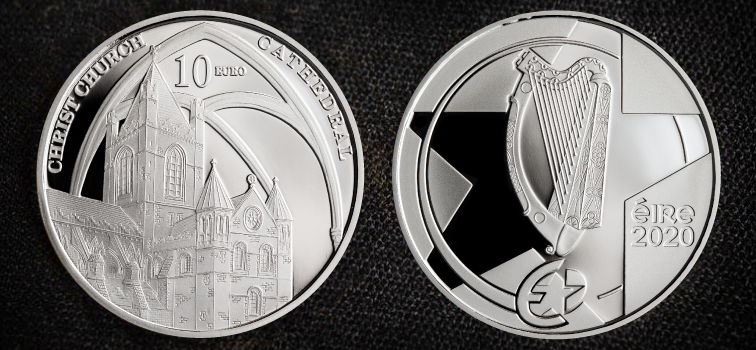Collector Coins

The Central Bank acts as an agent for the Minister for Finance in issuing all Irish coin, both circulating and commemorative. Irish collector coin products are issued to celebrate figures of national importance and to commemorate significant events in Irish history. Typically four to five new products are launched each year. Collector coins make a unique gift for many life celebrations and milestones and they are also a beautiful collector’s item.
How do I purchase Collector Coins?
To view and purchase collector coins visit www.collectorcoins.ie.
History of Irish Collector Coins
Ireland has issued commemorative proof coins since the foundation of the Irish Free State. The first Irish proof set was issued in 1928 and collected all of the original circulating coins in proof quality. A circulating set was later issued in 1971 to mark decimalisation. Other pre-euro circulating coin sets were issued by the Central Bank of Ireland in 1966, 1978, 1982, 1986, 1996, 1998 and 2000.
The Central Bank also issued a number of pre-Euro commemorative circulating coins:
In 1966, a special 10 shilling coin featuring a depiction of Cú Chulainn on the reverse and Padraig Pearse on the obverse was issued to commemorate the 50th anniversary of the Easter Rising;
In 1988, a 50p coin was issued to celebrate the Dublin Millennium, the design of which was based on the Dublin City Coat of Arms;
In 2000, a special £1 was issued to mark the Millennium, and depicting the historic Broighter Boat.
Other notable pre-euro collector coins issued by the Central Bank include:
5 ECU Silver, 10 ECU Silver and 50 ECU Gold coins issued in 1990 to mark Ireland’s tenure of the European Community Presidency which saw significant steps forward in European integration and advances towards the Economic and Monetary Union.
A special £1 commemorative coin issued in 1997 to mark the first 50 years of the United Nations (1945-1995).
What are proof coins?
Proof coins are collectable coins not intended for general circulation. They are minted using specially polished dies and blanks that give them a mirror-like finish. These coins are struck at least twice during the minting process. They are individually handled and protectively stored in order to prevent tarnishing. This is in comparison to general circulating coins which are struck once during the minting process and are handled in bulk. The defined, intricate and shiny appearance of proof coins gives them their collectable quality.
The Central Bank issues silver and gold commemorate proof coins, in addition to sets of circulating Euro coin struck to proof quality.
Design competitions are periodically advertised in national newspapers and on the Central Bank collector coin website, www.collectorcoins.ie. Artists and designers are shortlisted based on their CV and examples of previous medallic works by an independent panel of experts. Shortlisted candidates then receive a design brief in addition to the technical specifications of the proposed coin. The winning design is then selected by the Numismatic Advisory Panel.
This Panel has been established by the Central Bank to make recommendations and evaluate suggestions for the themes of future coin issue programmes. Public input into this process is welcomed. Suggestions should be sent at least 18 months in advance of the proposed launch date to ensure that they are included in the evaluation process.
You can submit your suggestions to us by sending an email to [email protected]. Please indicate the intended year of issue for your theme at the beginning of your suggestion.